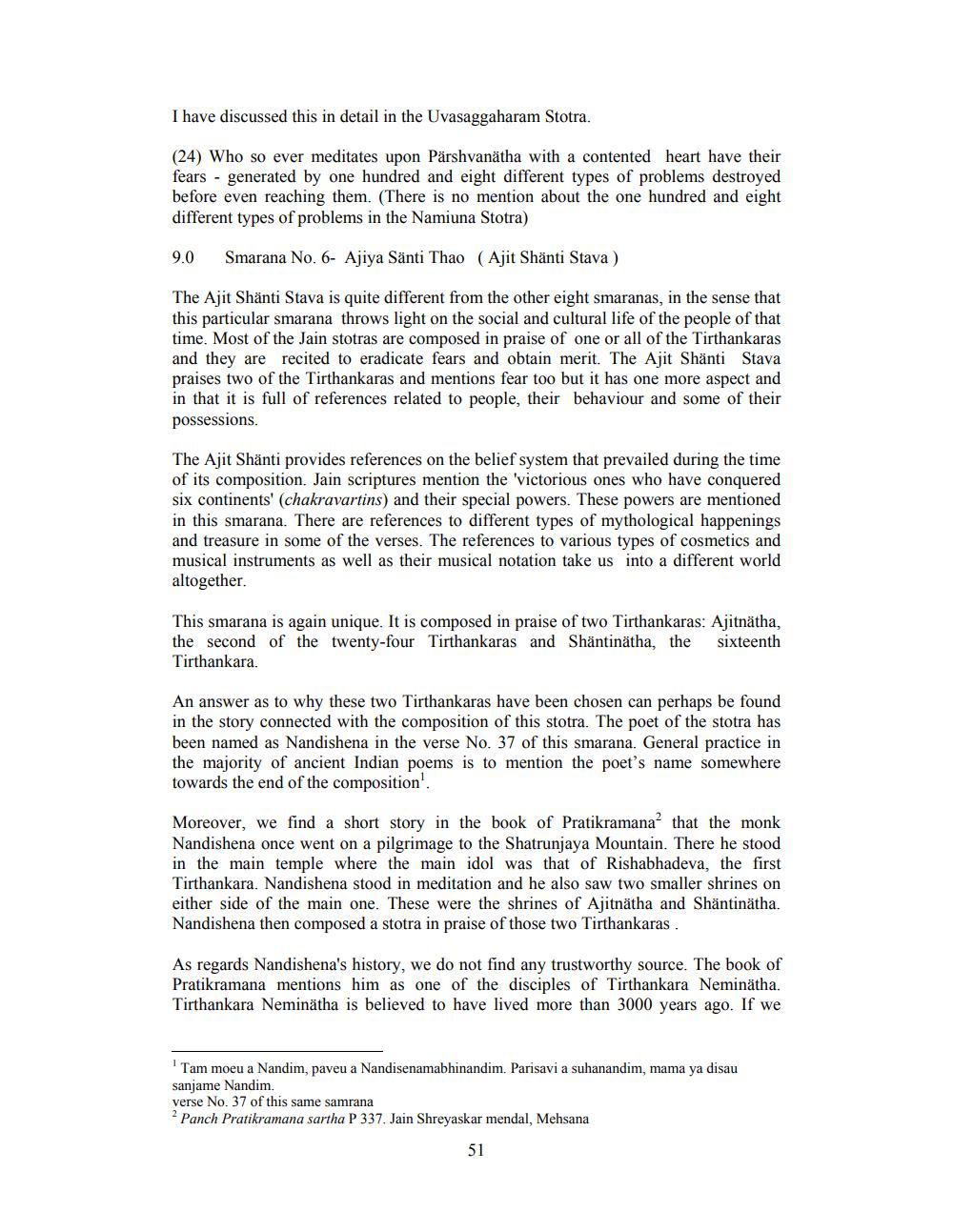________________
I have discussed this in detail in the Uvasaggaharam Stotra.
(24) Who so ever meditates upon Pärshvanätha with a contented heart have their fears generated by one hundred and eight different types of problems destroyed before even reaching them. (There is no mention about the one hundred and eight different types of problems in the Namiuna Stotra)
Smarana No. 6- Ajiya Sänti Thao (Ajit Shanti Stava)
The Ajit Shanti Stava is quite different from the other eight smaranas, in the sense that this particular smarana throws light on the social and cultural life of the people of that time. Most of the Jain stotras are composed in praise of one or all of the Tirthankaras and they are recited to eradicate fears and obtain merit. The Ajit Shänti Stava praises two of the Tirthankaras and mentions fear too but it has one more aspect and in that it is full of references related to people, their behaviour and some of their possessions.
9.0
The Ajit Shanti provides references on the belief system that prevailed during the time of its composition. Jain scriptures mention the 'victorious ones who have conquered six continents' (chakravartins) and their special powers. These powers are mentioned in this smarana. There are references to different types of mythological happenings and treasure in some of the verses. The references to various types of cosmetics and musical instruments as well as their musical notation take us into a different world altogether.
This smarana is again unique. It is composed in praise of two Tirthankaras: Ajitnätha, the second of the twenty-four Tirthankaras and Shäntinätha, the sixteenth Tirthankara.
An answer as to why these two Tirthankaras have been chosen can perhaps be found in the story connected with the composition of this stotra. The poet of the stotra has been named as Nandishena in the verse No. 37 of this smarana. General practice in the majority of ancient Indian poems is to mention the poet's name somewhere towards the end of the composition'.
Moreover, we find a short story in the book of Pratikramana2 that the monk Nandishena once went on a pilgrimage to the Shatrunjaya Mountain. There he stood in the main temple where the main idol was that of Rishabhadeva, the first Tirthankara. Nandishena stood in meditation and he also saw two smaller shrines on either side of the main one. These were the shrines of Ajitnätha and Shäntinätha. Nandishena then composed a stotra in praise of those two Tirthankaras.
As regards Nandishena's history, we do not find any trustworthy source. The book of Pratikramana mentions him as one of the disciples of Tirthankara Neminätha. Tirthankara Neminatha is believed to have lived more than 3000 years ago. If we
Tam moeu a Nandim, paveu a Nandisenamabhinandim. Parisavi a suhanandim, mama ya disau sanjame Nandim.
verse No. 37 of this same samrana
2 Panch Pratikramana sartha P 337. Jain Shreyaskar mendal, Mehsana
51




